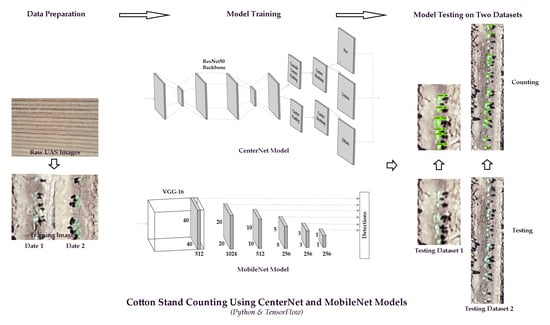Cotton Stand Counting from Unmanned Aerial System Imagery Using MobileNet and CenterNet Deep Learning Models
Abstract
Share and Cite
Lin, Z.; Guo, W. Cotton Stand Counting from Unmanned Aerial System Imagery Using MobileNet and CenterNet Deep Learning Models. Remote Sens. 2021, 13, 2822. https://doi.org/10.3390/rs13142822
Lin Z, Guo W. Cotton Stand Counting from Unmanned Aerial System Imagery Using MobileNet and CenterNet Deep Learning Models. Remote Sensing. 2021; 13(14):2822. https://doi.org/10.3390/rs13142822
Chicago/Turabian StyleLin, Zhe, and Wenxuan Guo. 2021. "Cotton Stand Counting from Unmanned Aerial System Imagery Using MobileNet and CenterNet Deep Learning Models" Remote Sensing 13, no. 14: 2822. https://doi.org/10.3390/rs13142822
APA StyleLin, Z., & Guo, W. (2021). Cotton Stand Counting from Unmanned Aerial System Imagery Using MobileNet and CenterNet Deep Learning Models. Remote Sensing, 13(14), 2822. https://doi.org/10.3390/rs13142822







